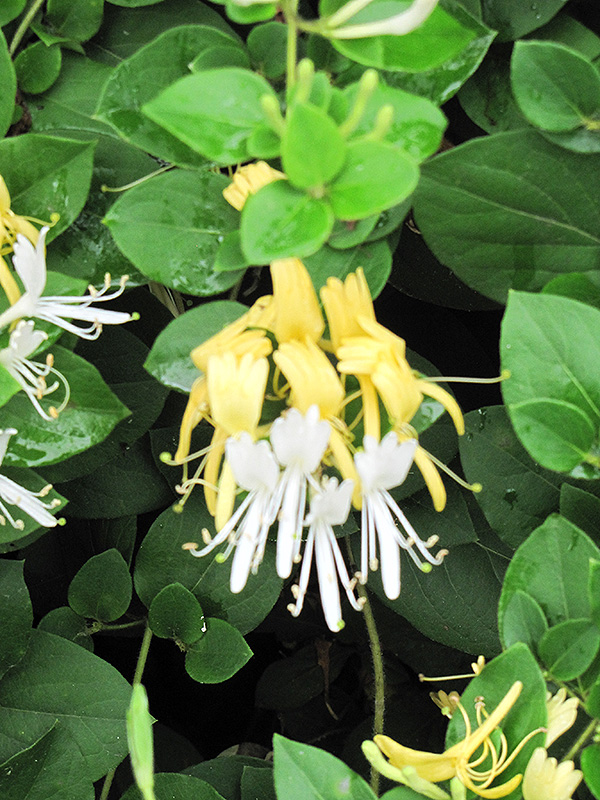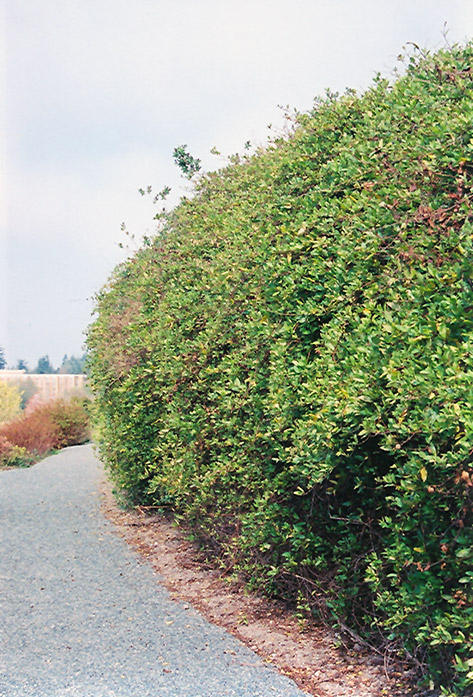Hall's Japanese Honeysuckle Lonicera japonica 'Halliana' Height: 25 feet Spread: 24 inches
Sunlight:
Hardiness Zone: 4b Description: A ubiquitous and rather vigorous vine which is highly cherished for its extremely fragrant white flowers which turn yellow with time; quite aggressive, can get a little weedy in the wrong place, but ideal for a fragrant cover for a fence or wall Ornamental Features Hall's Japanese Honeysuckle is covered in stunning clusters of fragrant white trumpet-shaped flowers with yellow overtones at the ends of the branches from late spring to late summer. It has dark green evergreen foliage. The pointy leaves remain dark green throughout the winter. It produces black berries from late summer to late fall. Landscape Attributes Hall's Japanese Honeysuckle is an open multi-stemmed evergreen woody vine with a twining and trailing habit of growth. Its average texture blends into the landscape, but can be balanced by one or two finer or coarser trees or shrubs for an effective composition. This is a high maintenance woody vine that will require regular care and upkeep, and is best pruned in late winter once the threat of extreme cold has passed. It is a good choice for attracting butterflies and hummingbirds to your yard. Gardeners should be aware of the following characteristic(s) that may warrant special consideration; Hall's Japanese Honeysuckle is recommended for the following landscape applications; Planting & Growing Hall's Japanese Honeysuckle will grow to be about 25 feet tall at maturity, with a spread of 24 inches. As a climbing vine, it tends to be leggy near the base and should be underplanted with low-growing facer plants. It should be planted near a fence, trellis or other landscape structure where it can be trained to grow upwards on it, or allowed to trail off a retaining wall or slope. It grows at a fast rate, and under ideal conditions can be expected to live for approximately 25 years. This woody vine should only be grown in full sunlight. It does best in average to evenly moist conditions, but will not tolerate standing water. It is not particular as to soil type or pH. It is highly tolerant of urban pollution and will even thrive in inner city environments. Consider applying a thick mulch around the root zone in winter to protect it in exposed locations or colder microclimates. This is a selected variety of a species not originally from North America.![]()
![]()
![]()
![]()
![]()
![]()
![]()
![]()
![]()
![]()
top of page
Louie's Nursery Menifee - Plant Finder
Characteristics
Applications
Features & Attributes
This tool is an online resource representing many of the varieties that we carry over the course of the season, and is intended for informational purposes only. Inventory varies seasonally, so we cannot guarantee that every plant will be in stock at all times - please contact the store directly for current availability. It does not include our entire selection of plants, so be sure to visit our store to see varieties that may not be represented on this list.
bottom of page

